I’ve been reading a book about insects and gardens recently (Insects and Gardens: In Pursuit of a Garden Ecology, by Eric Grissell). Grissell is an entomologist and gardener who makes a plea for forbearance when insects are discovered in the garden. After all, the insects will be there whether we wage war on them or not; the smart thing to do is learn to live with them and adapt them into your garden plan, rather than wear out your pocketbook and the environment in a chemical war that is impossible to win (insects reproduce so rapidly and have so many millions of years adapting to and incorporating chemical warfare in their genes that it’s ludicrous to try to DDT or DEET them into submission).
The subtitle of the book describes what I’ve been trying to do in my gardening, although with very little formal training and rather indifferent success. If you think about it, though, the very term garden ecology is an oxymoron. After all, ecology is the study of natural systems, while gardening is the art of imposing human aesthetic preferences on the landscape, resulting in a most unnatural system. Nearly all landscapes require enormous amounts of input (water, fertilizer, time and energy encouraging the good and removing the unwanted).
But the idea behind the book is that if we understand more about the various interactions that take place in both natural and artificially enhanced landscapes, we might be able to make a more coherent garden that is easier to manage. In this view, diversity is good, because pests are food for beneficial insects. Grissell specializes in Hymenoptera, the stinging and biting order of the giant class Insecta* (wasps, bees, ants), so he has a vested (I almost wrote vespa’d) interest in highlighting the beneficial aspects of insects in our garden.
With that in mind, here is the first pest insect species I’ve noticed this year, and a couple of generalist predators.
Adult female scale insects are wingless, legless, antennaless, and eyeless. They are dedicated to stationary feeding on plant sap. So they’ve evolved a tough waxy coating that protects them from most predators, and they excrete honeydew to bribe ants to defend them from those that remain interested in dining on them. The scale family counts a couple of economically important insects in its ranks: the “lac” scale insects are the “lac” in shellac, and the opuntia-cactus-feeding scale insects in South America are the source of cochineal dye, one of the earliest and best red dyes.
When they occur in great numbers on a plant, though, like this:
the amount of honeydew that they secrete can lead to fungus and sooty mold, while their sheer numbers can drain a plant of its vital fluids, leaving the normally brilliant plump red berries of Hamelia patens looking like this:
Were I a more perfect garden ecologist, I would try to observe how the ebb and flow of the scale population tracks with the abundance of lacewing eggs laid on the plants, but I’m impatient. I see my plant losing vigor at an alarming rate and I simply can’t wait for nature to take its course. I’ll be happy to let the lacewing larvae feed on any of the billions of scales I know I missed, but I was out there with scraper and thumbs for a couple of hours this weekend, and I sincerely hope I’ve saved the plant.
I can tell you from personal experience that scale insects are pretty gooey when crushed between your fingertips. And their so-called honeydew is pretty smelly, to boot!
The first and best predator of the scale bug is the ladybug, a beetle (order Coleoptera) in the coccinella family; both the larva and adult eats scale bugs, although they seem to prefer aphids:
I’ve found a few ladybugs, but no aphids. Does that mean they’re doing their job?
The next best predator of the scale bug is the green lacewing, Chrysops species:
I’ve been finding dozens of their eggs recently, but none of their larvae yet. I know they’re around, though, since the eggs are here, and as long ago as last March I actually found some of their larvae.
Another predator of the garden, much larger and easier to photograph than lacewing eggs or larvae, although absolutely useless against scale insects, is the tropical orbweaver (Eriophora ravilla). They’re still a challenge, though, since they hide out in rolled-up leaves during the day, and only come out to build their (sometimes enormous) webs at night. When you find where one sleeps, though, you tend to stake it out. I’ve been after this lady for weeks now, and I’ve finally managed to take a decent picture of her in her sleep (that sounds creepy in a different way than it should, I know).
Here is the lovely E. ravilla curled up in a leaf by day:
And in her invisible web by night:
Another gardener-friendly predator is the assassin bug; I’ve seen nearly half a dozen nymphs like this walking around my plants, checking for prey:
They’re a bit camera-shy, so this shot was the best I could do. I’m not sure they’re too interested in going after scale insects; I think they tend to respond to motion. They head toward it, if it’s prey-item sized, and away from it, if it’s camera-toting-naturalist size. Oh, well.
All of these predatory insects are welcome to roam my garden; I take on faith that they are responsible for how few pest outbreaks I’ve seen so far. Their presence indicates the presence of their prey items, so they must be controlling populations of harmful insects before their numbers become evident to a big lug like me! And that, in essence, is garden ecology: get out of the way and let nature take its course, but on a subset of nature that pleases your aesthetic sense as a gardener. Works for me.
Notes
*Remember, under traditional taxonomy, Kingdom Phyllum Class Order Family Genus Species, the class Insecta has 29 orders in it, depending on whom you believe
References
Grissell, E. Insects in the Garden: In Pursuit of a Garden Ecology. Timber Press, 2006.

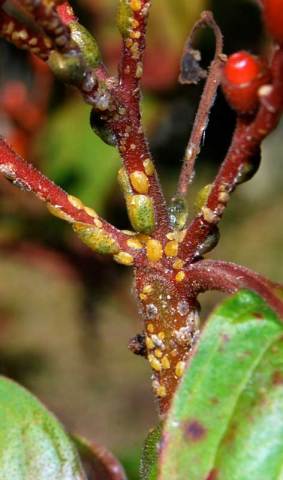
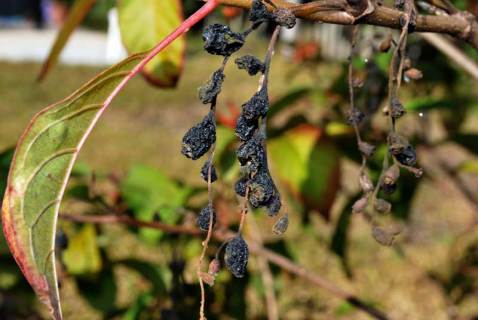
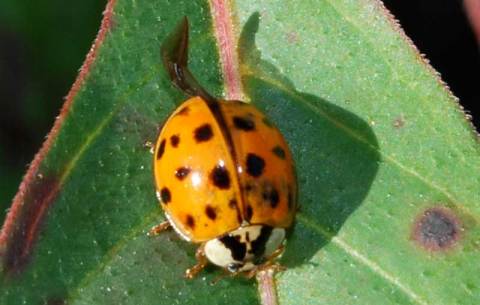
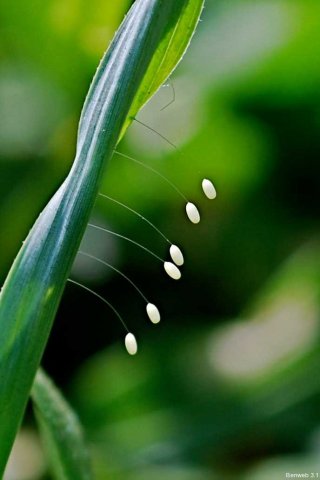
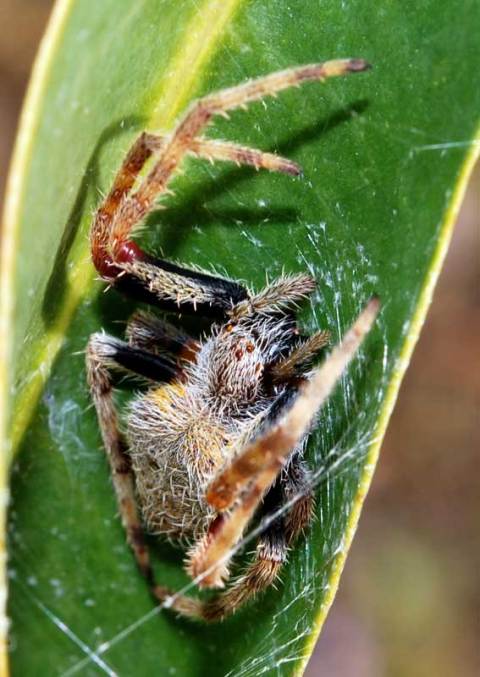
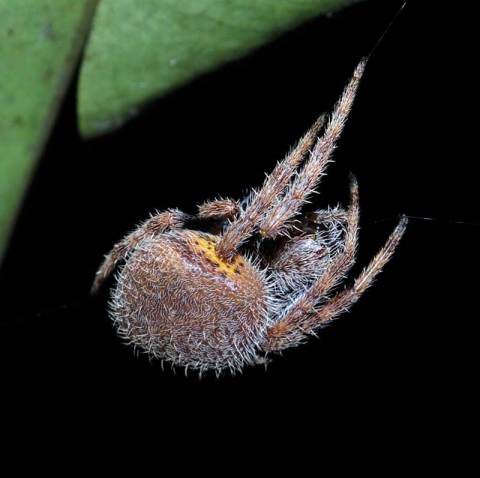
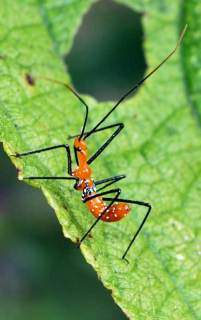
These spiders remind me so much of the acclaimed Darwin’s Bark Spider, Caerostris darwini. I haven’t seen a photo of Eriophora curled up and camouflaged on bark, though.
Great photos!